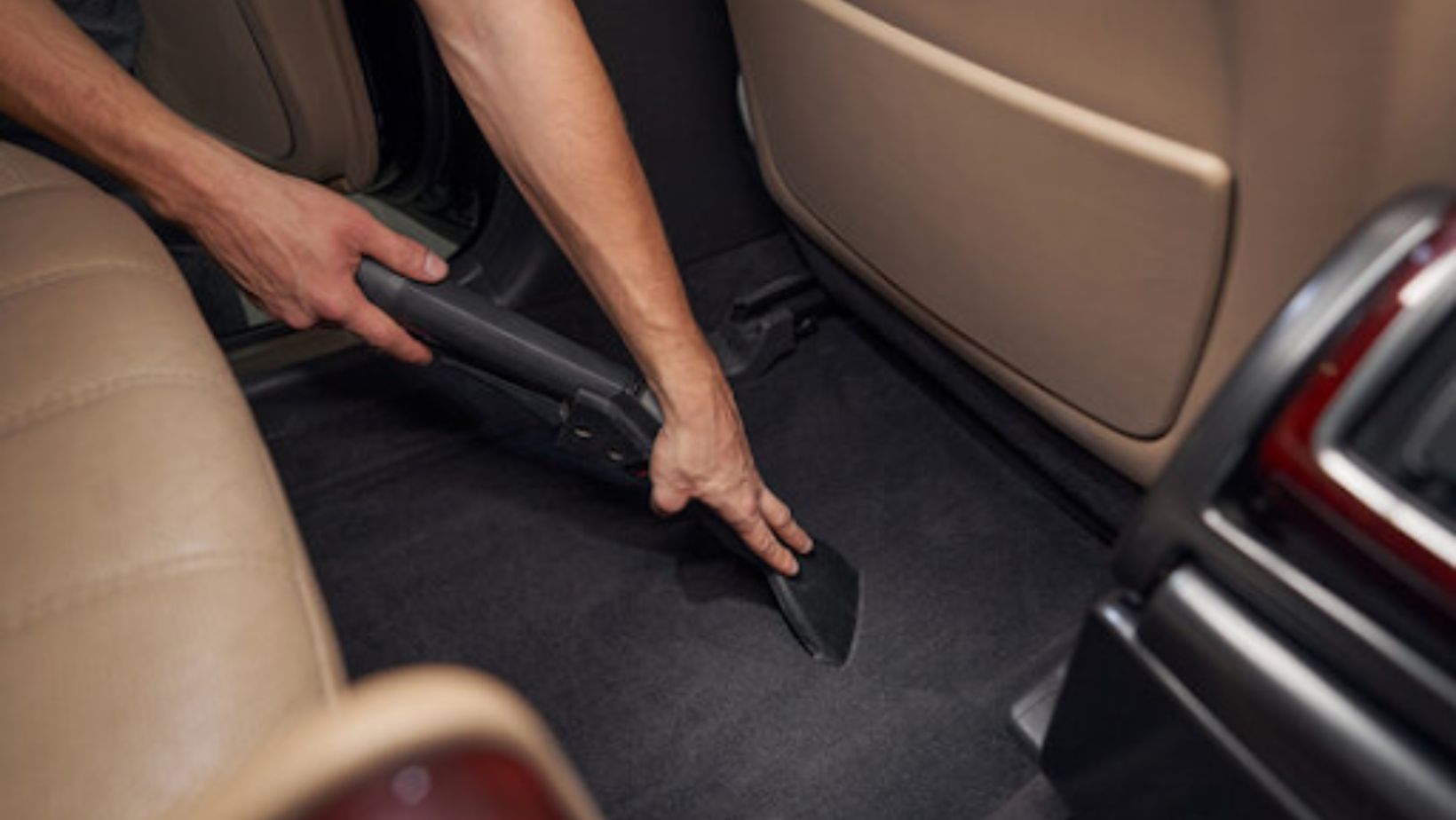
Keeping your car’s carpet clean is more than just an aesthetic choice; it’s a matter of hygiene and maintaining your vehicle’s value.
However, many people make mistakes that can cause more harm than good.
Here are some common car carpet cleaning mistakes and how to avoid them.
Misunderstanding Carpet Material
This common mistake can lead to improper cleaning and potential damage. There’s no waiting around it—if you want your car’s carpet to stay in good condition, you must identify its fabric.
Is it nylon, polyester, or something else? Each type has unique cleaning requirements.
Nylon, for instance, is durable but can fade if you’re not cautious. Polyester, on the other hand, is stain-resistant but can be tricky to dry.
How to Avoid It
Refrain from assuming one method fits all. You have to consider the material’s properties and treat it accordingly. Do your research, or better yet, consult a professional.
Using the Wrong Cleaning Products
One of the most common mistakes is using harsh chemicals.
Products designed for industrial use or household cleaning can damage car carpets. These harsh cleaners can cause discoloration, weaken the fabric, and even leave harmful residues that are difficult to remove.
How to Avoid It
Always opt for cleaners specifically designed for automotive interiors. These products are formulated to be tough on stains but gentle on your car’s materials.
If you need help deciding which product to choose, a mild detergent mixed with water can be a safe and effective alternative.
Always test the cleaner on a small, inconspicuous area before applying it to the entire carpet.
Overuse of Cleaning Chemicals
Using too much cleaner can also harm your carpet’s fibers and color. It can also leave a residue that attracts more dirt.
How to Avoid It
Always follow the manufacturer’s instructions. Use the recommended amount and avoid the temptation to add extra.
Also, make sure to rinse thoroughly. Leftover cleaning products can be as damaging as overuse.
Using Incorrect Techniques for Different Stains
Not all stains are created equal. Using the same cleaning method for every type of stain can be ineffective and sometimes worsen the stain.
How to Avoid It
Learn about different stain removal techniques based on the type of stain. For example, greasy stains might require a degreaser, while organic stains (like food or drink) might need an enzymatic cleaner.
Frequent Deep Cleaning
You might think you’re doing your auto a favor, but too much cleaning can damage the carpet fibers, causing them to fray and lose their plush feel.
It can also strip away protective treatments, leaving your carpet more vulnerable to stains.
How to Avoid It
Use a carpet extractor sparingly, focusing on spot treatments rather than frequent full cleanings.
Additionally, always opt for gentle, automotive-specific cleaning solutions to help maintain the carpet’s integrity and protective layers.
Skipping the Initial Vacuuming Step
Many people scrub the carpet without vacuuming first. This can grind dirt and debris deeper into the fibers, making the stains harder to remove and potentially damaging the rug.
How to Avoid It
Before you start cleaning, thoroughly vacuum the carpet to remove loose dirt and debris. Use a vacuum cleaner with a crevice tool to get into tight spots and ensure a comprehensive clean.
This step makes the cleaning process more effective and helps prevent wear and tear on your carpet.
Scrubbing Too Vigorously
When faced with stubborn stains, the instinct might be to scrub as hard as possible. Yet, aggressive scrubbing can damage the carpet fibers, causing them to fray and look worn out.
How to Avoid It
Instead of scrubbing, gently blot the stain with a cloth or sponge.
For tough stains, let the cleaning solution sit for a few minutes to break down the stain before blotting it away.
Patience and gentle blotting will yield better results without damaging the carpet.
Over-Saturating the Carpet
Over-saturating the carpet with water or cleaning solution is yet another common error. Excess moisture can seep into the padding underneath, leading to mold and mildew growth. It not only causes unpleasant odors but can also be a health hazard.
How to Avoid It
Use water sparingly and always blot rather than soak the carpet. Apply cleaning solutions in small amounts and use a damp, not soaked, cloth or sponge to clean.
After cleaning, ensure the carpet is thoroughly dried by leaving the windows open or using fans to speed up the drying process.
Neglecting to Rinse and Remove Residue
Many car owners forget to rinse out cleaning solutions properly. Leaving soap residue on the carpet can attract dirt and cause the carpet to become dirty again much faster.
How to Avoid It
After cleaning the carpet, use a clean, damp cloth to wipe away any remaining cleaner. It’s important to rinse the cloth frequently to ensure you’re not just spreading the soap around.
Proper rinsing will help keep your carpet clean longer and prevent any sticky residue from building up.
Delayed Stain Treatment
The longer a spill sits, the more it seeps into the carpet fibers, making it harder to remove.
How to Avoid It
Act swiftly. Blot the spill immediately to prevent it from spreading or soaking deeper.
A cleaning solution should be applied as promptly as possible. If you’re on the road and don’t have access to one, even plain water can help dilute the spill and lessen its impact.
Incorrect Drying Methods
You might be tempted to crank up the heat in your car to speed up the drying process. But it’s not recommended.
High heat can cause your carpet to shrink or warp, and it also promotes the growth of mold and mildew.
How to Avoid It
You should let your carpet air dry naturally, with windows slightly open, for proper ventilation. Avoid driving or stepping on the carpet until it’s completely dry.
If you’re in a hurry, you can use a wet/dry vacuum to extract excess moisture.
Not Protecting the Carpet Post-Cleaning
After investing time and effort into cleaning the car carpet, many people forget to protect it from future stains and damage.
How to Avoid It
Consider using a carpet protector spray designed for automotive use. These products create a barrier on the carpet fibers that can repel water and stains.
Other than that, using floor mats can help protect high-traffic areas and make cleaning easier in the future.






